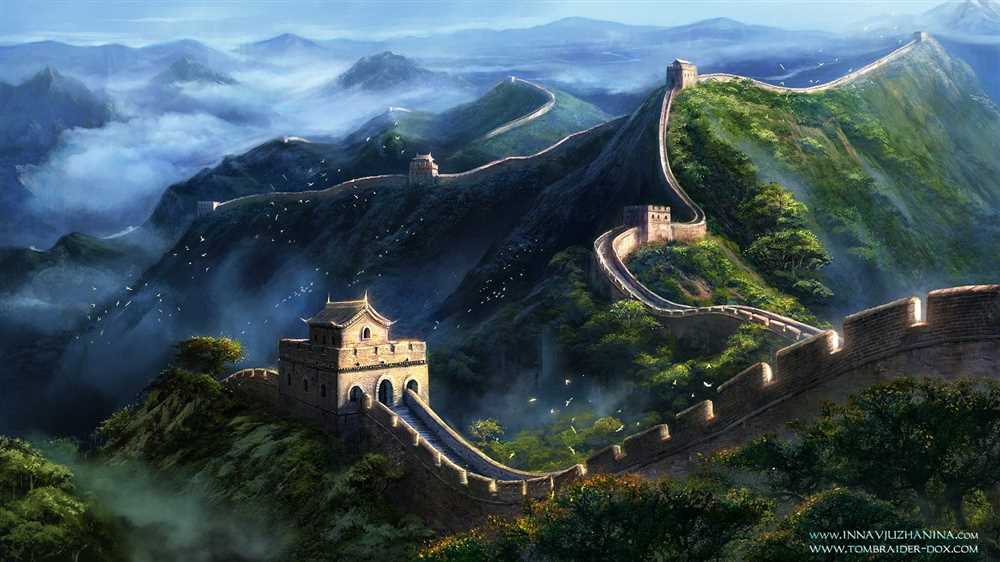
The Great Wall of China is not just a wall, but a symbol of ancient Chinese engineering and military prowess. Built over hundreds of years, this monumental structure stretches over thousands of miles across northern China, serving as a defense against invasions from various nomadic tribes. The construction of the Great Wall involved tremendous organization, resources, and labor, with countless workers involved in its creation.
One of the primary reasons for the construction of the Great Wall was to protect China from the constant threat of nomadic invasions. The wall provided a physical barrier, making it difficult for these tribes, such as the Mongols and Xiongnu, to penetrate the borders of China. It also served as a psychological deterrent, demonstrating the strength and unity of the Chinese empire to potential invaders.
The construction of the Great Wall involved a massive undertaking of human labor. Emperors of various dynasties mobilized millions of workers, including soldiers, peasants, and prisoners, to participate in the construction. These workers faced grueling conditions and often worked under dangerous circumstances. Despite the hardships, their efforts resulted in the creation of one of the world’s most iconic structures.
In addition to its defensive purpose, the Great Wall played an important role in China’s economic development. The wall facilitated trade along the Silk Road, a network of trade routes connecting China with Europe and the Middle East. The Wall served as a checkpoint where travelers had to pay taxes and tariffs, providing a significant source of revenue for the empire. Furthermore, the construction of the Wall created employment opportunities for local communities, stimulating economic growth in the region.
In conclusion, the Great Wall of China is an extraordinary testament to the ingenuity and determination of the ancient Chinese civilization. Not only did it serve as a formidable defense against nomadic invasions, but it also played a crucial role in China’s economic development. The construction of the Great Wall required immense resources and labor, but the result is a cultural and historical treasure that continues to awe and inspire people from around the world.
Background Information on the Great Wall of China
The Great Wall of China is one of the most iconic structures in the world. It is a massive defensive wall that stretches over 13,000 miles across the northern part of China. Construction of the wall started over 2,000 years ago, during the Qin Dynasty, and continued for centuries under various dynasties. The purpose of the Great Wall was to protect China from invasions and attacks from nomadic tribes that lived in the regions to the north.
The construction of the Great Wall was a monumental feat of engineering. It was built using a variety of materials, including stone, brick, earth, and wood. Thousands of laborers, including soldiers, peasants, and convicts, were assigned to build the wall. They worked tirelessly, often under harsh conditions, to complete this massive project. The wall was fortified with watchtowers, barracks, and signal towers, which allowed for communication and defense along its length.
The Great Wall of China was not a singular structure but rather a network of walls, fortifications, and barriers that spanned different regions of China. It served as a physical barrier, which made it difficult for invaders to cross. It also demarcated the borders of the Chinese empire and acted as a psychological deterrent to potential enemies. Despite its impressive size and scale, the Great Wall was not completely impenetrable, as it was breached and crossed by various armies throughout history.
The construction of the Great Wall had a significant impact on Chinese society. It required a massive investment of resources and manpower, which had both positive and negative consequences. The construction of the wall helped to unify China and strengthen the central government. It also stimulated trade and communication along the Silk Road, as the wall acted as a conduit for goods and information. However, the labor-intensive construction of the wall also led to the suffering and death of many workers. Moreover, the diversion of resources towards the construction of the wall had an economic impact, as it strained the imperial treasury and hindered the development of other infrastructure projects.
Document 1: Understanding the Purpose of the Great Wall
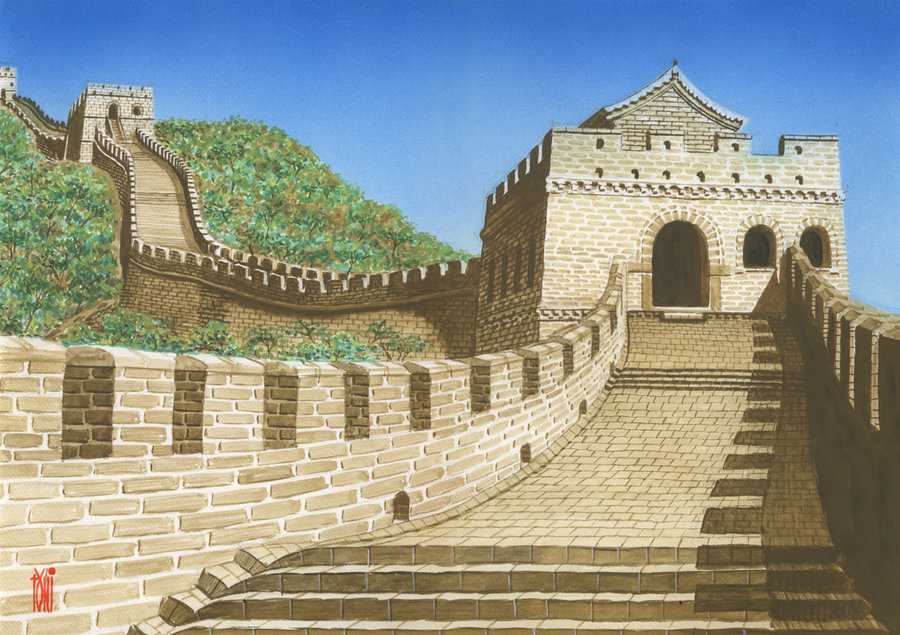
The Great Wall of China, one of the world’s most iconic structures, has sparked curiosity and fascination for centuries. Document 1 provides insights into the purpose of the Great Wall and sheds light on the motivations behind its construction. According to the document, the primary objective of building the wall was to serve as a defense mechanism against potential invasions from nomadic tribes.
As mentioned in the document, Chinese leaders recognized the need to fortify their borders and protect their territories from external threats. The Great Wall was constructed to serve as a physical barrier, preventing the entry of enemy forces. The author of the document explains that the wall acted as a deterrent, making it difficult for nomadic tribes, such as the Xiongnu, Mongols, and others, to launch successful attacks on China’s northern border.
The document also highlights the economic and social implications of the Great Wall’s construction. The author mentions the use of forced labor from peasants and criminals, suggesting that the wall’s development was a massive undertaking that required significant resources and manpower. It is important to note that the construction of the Great Wall not only had military significance but also served as a unifying project for the people of China, fostering a sense of national identity and pride.
- The Great Wall of China was built as a defense mechanism to protect China’s territories from nomadic tribes.
- The wall served as a deterrent, making it difficult for enemy forces to invade.
- The construction of the wall required extensive resources and forced labor.
- The Great Wall also had social and cultural significance, fostering national identity and pride among the Chinese people.
Overall, Document 1 provides valuable insights into the purposes behind the construction of the Great Wall of China. It emphasizes the defensive nature of the wall, its role as a deterrent, the economic resources required for its construction, and its cultural significance for the Chinese people.
Analyzing the main reasons for building the Great Wall
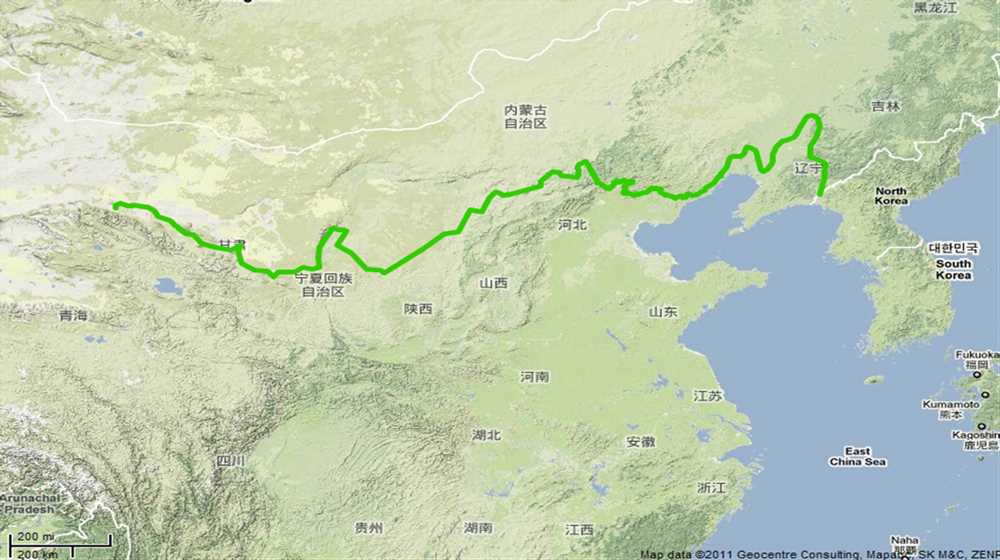
The construction of the Great Wall of China was a monumental undertaking that spanned several centuries and was motivated by a variety of factors. One of the main reasons for building the Great Wall was to defend the Chinese empire from external threats and invasions. Throughout history, China faced numerous attacks from different nomadic tribes and foreign powers, such as the Mongols and the Xiongnu. The construction of the Great Wall served as a physical barrier to deter potential invaders and protect the Chinese civilization.
Another crucial reason for building the Great Wall was to establish and maintain control over the northern frontier of China. By fortifying the border with a massive defensive structure, the Chinese authorities aimed to assert their sovereignty and prevent any rebellions or uprisings from occurring in the northern territories. The Great Wall not only acted as a military defense but also as a symbol of power and authority, showcasing the strength and unity of the Chinese state.
Furthermore, the construction of the Great Wall had economic motivations. It facilitated the collection of taxes and trade along the northern border, as it controlled the flow of goods and people entering and exiting China. The wall served as a checkpoint and a means of regulating commerce, contributing to the economic prosperity of the empire. In addition, the construction of the wall provided employment opportunities for a vast number of laborers, stimulating the local economy and improving the living conditions of the population residing in the vicinity of the wall.
In conclusion, the main reasons for building the Great Wall of China were defense, territorial control, and economic benefits. It served as a physical barrier to protect China from external threats, demonstrated the power of the state, and facilitated taxation and trade. The grandeur of the Great Wall stands as a testament to the importance of these factors in shaping the history and development of China.
Document 2: Examining the Construction Process
The construction process of the Great Wall of China was a massive undertaking that required meticulous planning, engineering expertise, and a large workforce. Document 2 provides valuable insight into the various stages of construction and the techniques utilized during the building of this monumental structure.
The document states that the construction of the Great Wall involved three main steps: selecting the location, preparing the foundation, and building the wall itself. The first step involved careful selection of the most strategic locations for the wall, such as mountain passes or natural barriers. This suggests that the builders were not only concerned with creating a physical barrier but also with controlling the movement of people and goods along the northern border of China.
Once the location was determined, the builders focused on preparing the foundation. The document mentions the use of materials such as earth, rocks, and wood to create the base of the wall. This indicates that the builders wanted to ensure the stability and durability of the structure by using a solid foundation. It is also worth noting that the document emphasizes the importance of laborers with strong physical abilities and experience in handling heavy materials, highlighting the demanding nature of the construction process.
Finally, the builders began the process of actually building the wall. The document describes the use of bricks and stones, as well as wooden beams and plates, to construct the main body of the wall. It also mentions the use of watchtowers and gates at regular intervals, indicating that the wall served not only as a defensive structure but also as a means of communication and control.
In conclusion, Document 2 provides valuable information about the construction process of the Great Wall of China. It highlights the strategic selection of locations, the meticulous preparation of the foundation, and the use of various materials and techniques in building the wall itself. This document sheds light on the immense efforts and expertise required to create this iconic landmark.
Exploring the Methods and Resources Used to Build the Great Wall
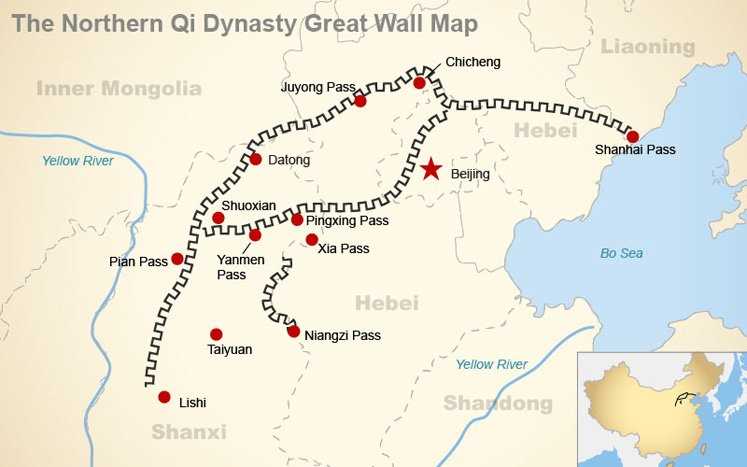
The construction of the Great Wall of China was an extraordinary feat of engineering that required extensive planning, organization, and resources. The wall, which stretches over 13,000 miles, was built using several methods and relied on a variety of resources to ensure its durability and strength.
Methods:
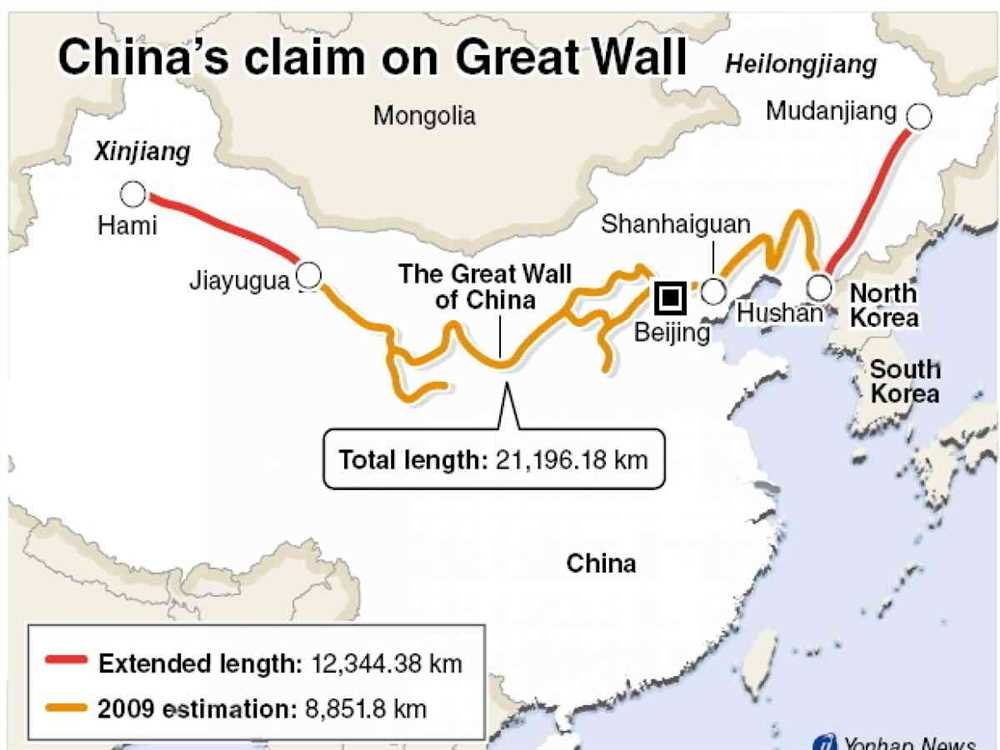
One of the main construction methods used to build the Great Wall was the stacking of large stones and bricks. Workers would quarry these materials from nearby mountains and transport them to the construction sites. The stones and bricks were then carefully laid and fitted together using a mortar made of water, rice flour, and lime. This method ensured the stability of the wall and allowed it to withstand the test of time and the harsh weather conditions of the region.
Another common method used during the construction of the Great Wall was rammed earth. This technique involved compressing layers of earth, gravel, and other materials to form a solid foundation. Workers would use wooden frames to create the desired shape and then compact the earth using manual labor or animals. The result was a sturdy and durable structure that could effectively resist erosion and provide protection against invaders.
Resources:
The construction of such a massive structure required a significant amount of resources, including labor, materials, and financial investments. Thousands of skilled and unskilled workers were employed to build the wall, with many of them working as manual laborers. These workers were organized into labor teams and were provided with food, shelter, and other necessities to ensure their well-being and productivity.
In addition to labor, the construction of the Great Wall also relied on vast amounts of materials, such as stone, brick, earth, and wood. These materials were sourced locally, with workers transporting them from nearby quarries and forests. The availability of these resources played a crucial role in the construction process, as they determined the speed and efficiency of the building efforts.
Furthermore, the financial resources allocated to the construction of the Great Wall were immense. The project was funded by the imperial government, with significant financial investments made to ensure the successful completion of the wall. These resources were used to purchase materials, pay workers, and cover the various expenses associated with the construction process.
In conclusion, the construction of the Great Wall of China was a monumental undertaking that required meticulous planning, effective organization, and abundant resources. The methods used, such as stone stacking and rammed earth, allowed for the creation of a strong and enduring structure. Meanwhile, the availability of labor, materials, and financial investments ensured the smooth progress of the construction project. The Great Wall stands as a testament to the ingenuity and determination of the ancient Chinese civilization.
Document 3: Evaluating the Social Impact
The Great Wall of China had a significant social impact on the people who lived near it. One way it affected their lives was by providing them with a sense of security and protection. The wall acted as a barrier against invaders and served as a symbol of the nation’s strength and unity. It gave the Chinese people a feeling of pride and patriotism, as they saw it as a testament to their civilization’s capabilities.
Moreover, the construction of the Great Wall created numerous job opportunities for the local population. Many individuals were employed to build and maintain the wall. This not only boosted the economy of the region but also helped to alleviate poverty and provide a source of income for those in need. Additionally, the presence of the wall attracted merchants and travelers, leading to the growth of trade and cultural exchange along its route.
On the other hand, the construction of the Great Wall also had negative social consequences. The labor required to build such an extensive structure was immense and often forced individuals into hard and dangerous work conditions. Many workers lost their lives during the construction process, and their families were left devastated and struggling to make ends meet.
In conclusion, the Great Wall of China had a profound impact on the social fabric of the communities near it. It provided a sense of security and national pride, while also creating employment opportunities and fostering trade. However, it came at a high cost in terms of human lives and hardship for the workers involved in its construction.